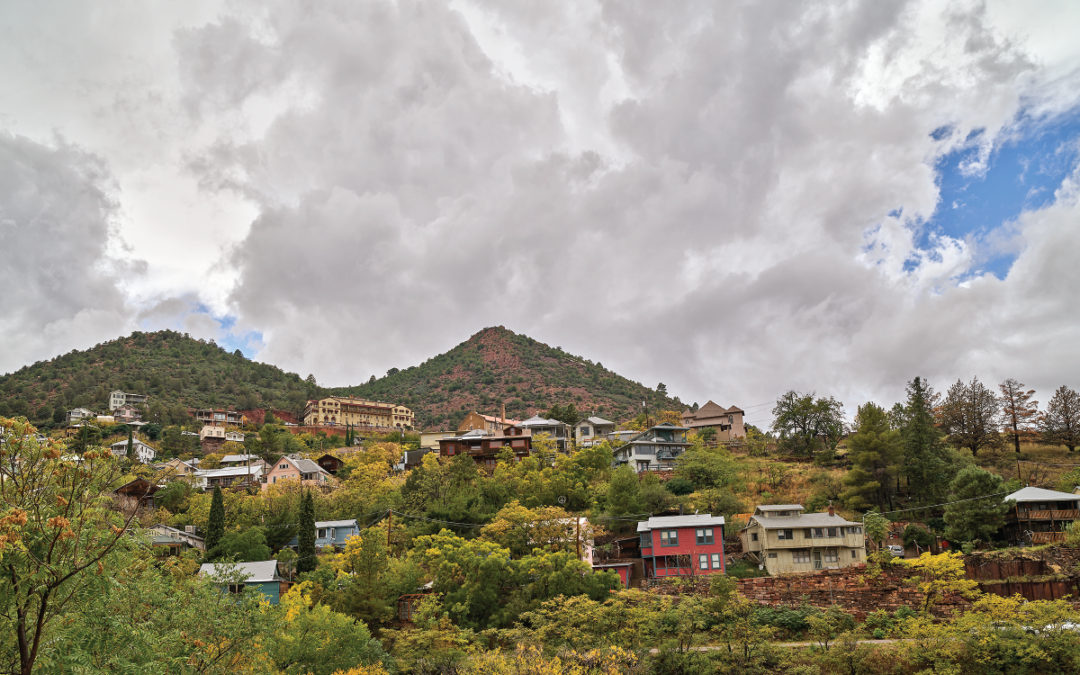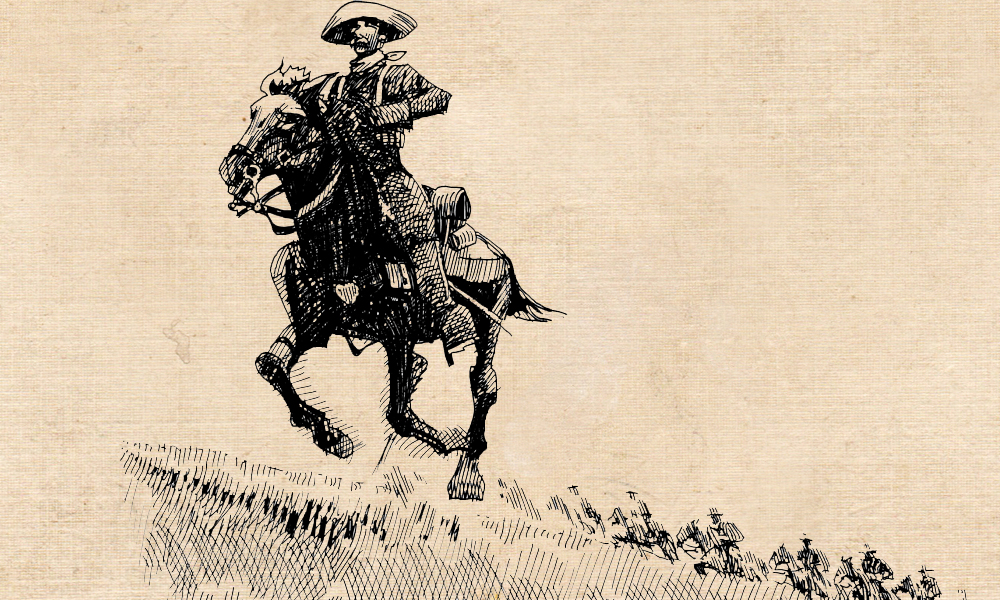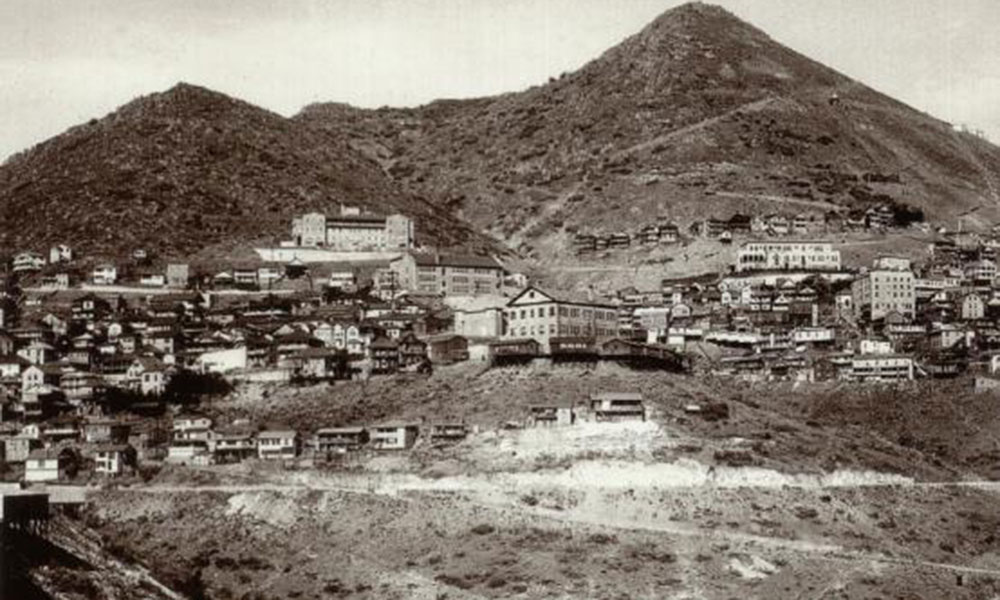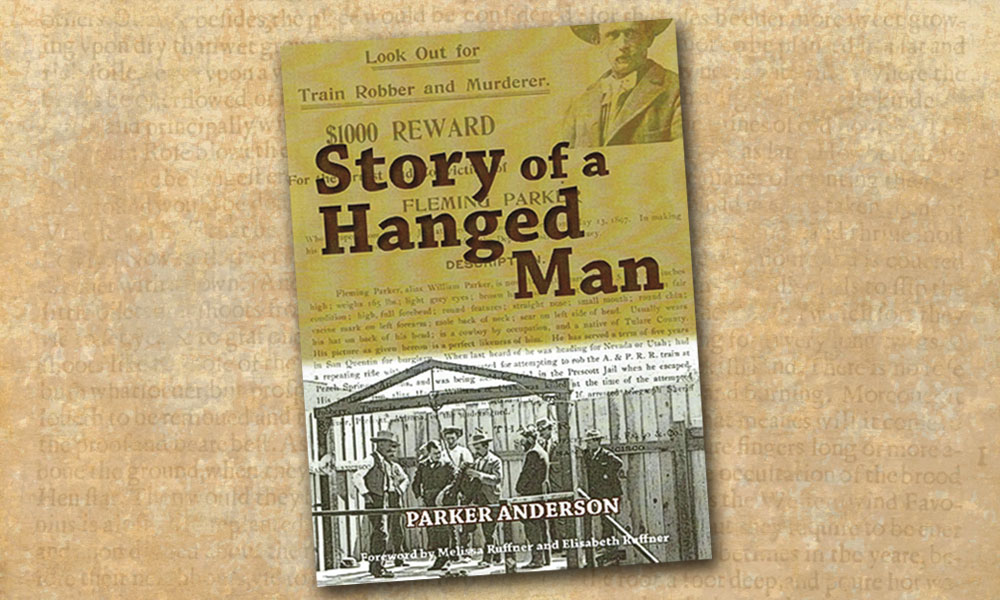
All Images Courtesy Carol M. Highsmith Archive, Library of Congress Unless Otherwise Noted
When you dig deep into Jerome’s history you find so many layers—so many stories of boom and bust, of bordellos, opium dens, gambling and bootleg liquor, labor strife and striking miners deported from town on cattle cars.
At the tail end of the 19th century, three fires leveled the hillside town in less than two years. That brought a do-gooder—Mrs. Thomas of the Salvation Army—who observed that the destructive fires were “an object lesson, a visitation of God’s wrath upon the sinful camp.”

The Weekly Journal Miner in May 1899 reported that Thomas “stood in the street and prayed for the Sodom and Gomorrah of Arizona and said she was pained to see that the fire had not purified the place.”
Thomas predicted the Lord wasn’t done with Jerome yet. “God will burn it up a dozen times to make it a Christian town or nothing.”

Newspapers across the nation called Jerome “the Wickedest Town in America,” eclipsing hell-raising places like Dodge City, Deadwood, Tombstone, Leadville and Cripple Creek.
Jerome has come a long way since then as it celebrates its 125th anniversary as a town this year. It has become a popular destination for desert dwellers and others for its arts and music scene, wine tasting, colorful history and milder climate.

Stuart Rosebrook
“We’re a mile high in Jerome. We’re cooler than Phoenix, and our temperatures are better too,” joked Tom Pitts, a Jerome chamber of commerce board member. “Plus, the views up here are spectacular.”
In 1899, Yavapai County voted to create a town government for the rowdy mining camp. That led to a Jerome building code requiring brick or masonry construction to thwart another town-leveling fire.
As a result, countless buildings in Jerome today are at least a century old. “Many date back to a rebuilding phase that started in 1899,” Pitts said.
It’s quite remarkable what the town has become since mining ceased in 1953, 71 years ago.

Jerome was left for dead. Miners fled, businesses shuttered, and movers trucked houses down the mountain to nearby Verde Valley communities.
Jerome’s population dwindled from 12,682 in the 1920 census to 243 hardy souls in 1960. Today’s population is just under 500 people living in a town designated a National Historic District. The town’s economy is sustained by close to a million visitors each year.
Jerome State Historic Park, a good first stop for history buffs, is in the elegant 1916 mansion of copper baron James S. Douglas. Nearby is the Audrey Headframe Park, where visitors can look into a mineshaft 1,900 feet deep.

The Jerome Historical Society Mine Museum on Main Street has a collection of mining and gaming artifacts, and historic photos.
A mile west of the main business block, the Gold King Mine Ghost Town features mining equipment, a stamp mill, miners’ shacks, vintage vehicles, a sawmill and blacksmith shop.
“It’s the real history, not the myths,” Pitts said. “We’ve got the real thing.”
History and the arts have long been Jerome’s drawing cards.


An influx of artists, many from the West Coast, discovered Jerome after the mines closed. They moved to town for cheap housing and studios, Pitts explained.
Today there are more than 30 art studios. The Jerome Artist Cooperative Gallery shows their work in the refurbished Hotel Jerome, which opened in 1917. The gallery is a focal point on the first Saturday of each month for the Jerome Art and Wine Walk.
Jerome has seven wine-tasting rooms, part of the growing Verde Valley wine enterprise.

Wine and spirits are also available on Main Street at the Clinkscale Hotel, the Spirit Room and Paul & Jerry’s Saloon, one of Arizona’s oldest watering holes.
The Spirit Room is the hub of Jerome’s music scene. The corner bar in the Connor Hotel hosts rock and blues bands regularly on weekend afternoons and Friday evenings.
The Jerome Music & Arts Festival is June 8-9. Other events are planned for Jerome’s 125th anniversary celebration.

Some of the town’s unique shops include the Miners Pick & Rock Shop, Rickeldoris Candy and Nelly Bly, which boasts of having the world’s largest gallery of kaleidoscopes.
A longtime Arizona journalist, Peter Corbett lived in the Verde Valley below Jerome and has spent a lot of time in the town over the past half century.

Where History Meets the Highway

FIRST STOP
Jerome Visitor Center
310 Hull Avenue
jeromechamber.com
COPPER BARON MANSION
Jerome State Historic Park is in the 1916 mansion of copper baron James S. Douglas. Exhibits include a 3-D model of Jerome’s underground mine tunnels.
azstateparks.com
DIGGING DEEP INTO MINE HISTORY
Jerome Historical Society Mine Museum displays include miners’ tools, gaming devices and stories of the melting pot of miners.
jeromehistoricalsociety.com
GHOST TOWN GRUB
Hungry? Walk up a steep stairwell to the Haunted Hamburger for burgers, beverages and Verde Valley views.
thehauntedhamburger.com
HOTEL ON A HILL
Jerome Grand Hotel, built as a mining company hospital in 1926, overlooks the town from its perch on Cleopatra Hill. The hotel’s Asylum Restaurant serves breakfast and dinner.
jeromegrandhotel.net
MUSIC AND SPIRITS
The Spirit Room bar sits at Jerome’s main intersection, and music from rock and blues bands spills out onto Main Street. Upstairs is the Connor Hotel in this 1898 building.
spiritroom.com






